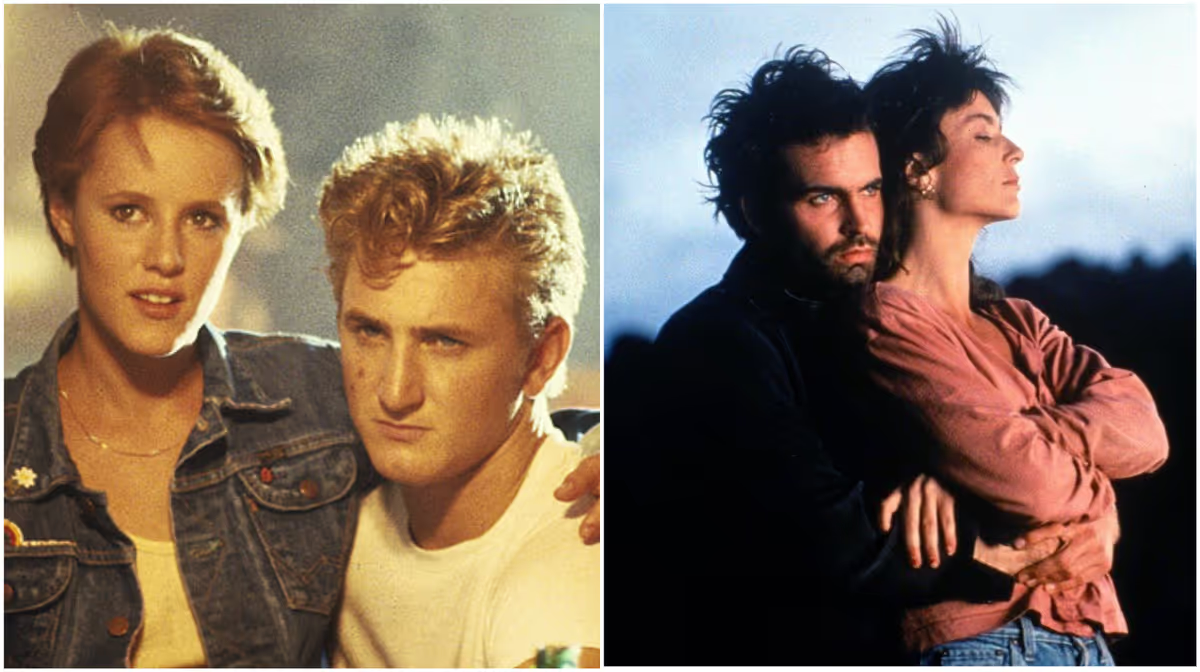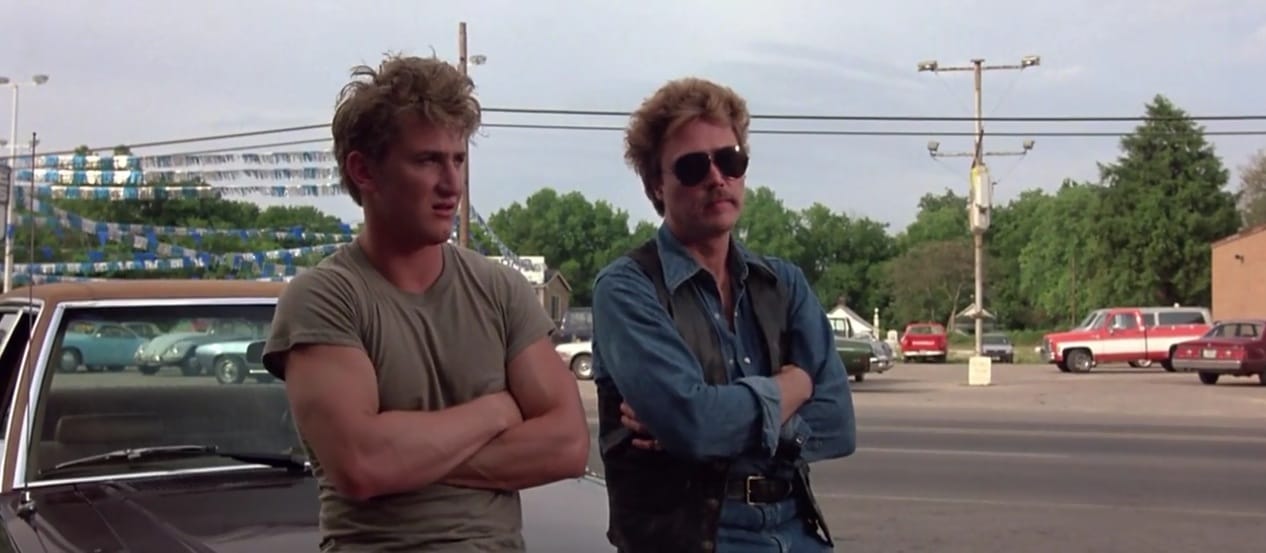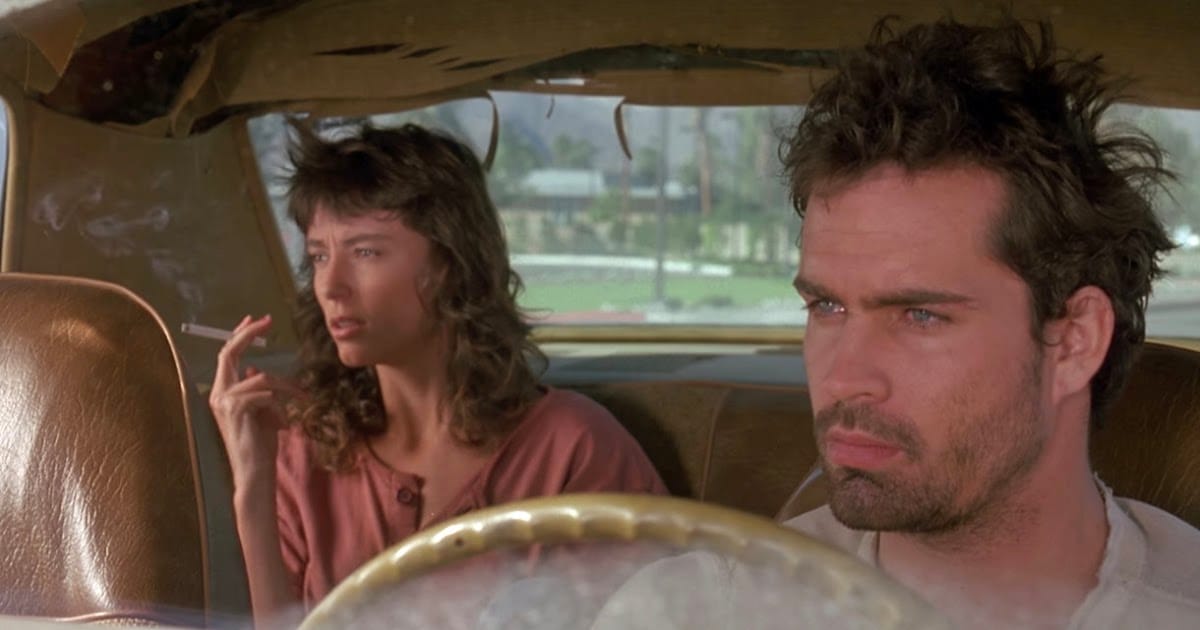Darkness at the Edge of Town: James Foley’s ‘At Close Range’ and ‘After Dark, My Sweet’
The late director’s early films include a pair of haunting crime stories inspired by fact and fiction.

As Brad Whitewood Jr. (Sean Penn), sometimes known as “Little Brad,” glides through the rain-slicked downtown streets of the rural Pennsylvania region he calls home in the opening moments of the 1986 film At Close Range, he looks, if not like the king of the town, like a young lion whose place on the food chain is best left unquestioned. After failing to persuade a middle-aged man wearing a suit either to return the five dollars he took from Brad’s underaged brother Tommy (Christopher Penn) to buy some gin or hand over the bottle, Brad hops atop the man’s car and rides the hood until his antagonist gives up both the money and the booze. Then Brad heads to the monument in the center of town square that doubles as the local hangout spot and starts chatting up Terry (Mary Stuart Masterson), a clean-cut teen who nevertheless proves receptive to his advances, even popping a pill Brad offers her after he admits he has no idea what it is. Little Brad gets what he wants.
What Brad doesn’t get, and has never gotten, is what he needs. The glimpses of Brad and Tommy’s home life offered in the fact-inspired film, (written by Nicholas Kazan from a story by Kazan and Elliott Lewitt) find his mother Julie (Millie Perkins) and grandmother (Eileen Ryan) watching the boys at a distance in the rare moments when they manage to look up from the television. They’re not active participants in their boys’ lives. That leaves an opening for their estranged criminal father “Big Brad” (Christopher Walken) to swoop in and claim them as their own.
The Reveal is a reader-supported newsletter dedicated to bringing you great essays, reviews and conversation about movies. While both free and paid subscriptions are available, please consider a paid subscription to support our long-term sustainability.
Some dark force or another is always waiting to claim the lost souls in At Close Range and After Dark, My Sweet, a pair of early films directed by James Foley, who died last week at the age of 71. Discovered as a film student by Hal Ashby, Foley had an up-and-down Hollywood career from the start. His second film, At Close Range is sandwiched in his filmography by the minor 1984 hit Reckless and Who’s That Girl?, a flop screwball comedy starring Madonna that’s now best remembered for its soundtrack. He ended his feature career with a pair of sequels to Fifty Shades of Grey that enjoyed more commercial success than critical acclaim. Foley’s in-between years include everything from his classic adaptation of Glengarry Glen Ross to the trashy but entertaining stalker thriller Fear starring Mark Wahlberg and Reese Witherspoon, which at least has the distinction of containing the most erotic roller coaster ride ever put to film.
Foley remained reliable throughout his career, but there’s an electric charge to these early films that sets them apart. “That film got made because Sean was very hot,” Foley told Film Freak Central’s Walter Chaw in a 2003 interview, speaking of At Close Range. “We could do whatever we wanted because we held the power. I never appreciated that at the time, how important that was, so we literally did whatever we wanted and tried crazy things and didn’t care what other people thought–we didn’t have to care what other people thought.” The result is a film that applies noir brushstrokes to a brutal coming-of-age story in which Brad Jr. falls under Brad Sr.'s sway then struggles to escape his old man before it’s too late.

In his father, Brad Jr. sees the realized image of who he imagines himself to be: a cool, tough hustler who doesn’t have to play by the rules. In one scene, they cruise through the countryside, where the gum-chewing Brad Sr. explains that where everyone else sees farmhouses he sees money. When he thinks about it, all Brad Sr. can do is laugh. (His criminal enterprise relies heavily on the high-risk, high-reward theft of tractors.) Brad Sr.’s the real version of the person Brad Jr. is pretending to be, or so he thinks. But the younger Brad initially fails to notice that his dad’s habit of sneering at the rest of the world and stepping over everyone who gets in his way doesn’t exclude him or Tommy. By the time he gets the picture, it’s too late to avert disaster.
At Close Range owes much of its effectiveness to the performances of Penn and Walken. The former plays his Brad as a kid who’s learned to use bravado to mask a deep sense of need; the latter plays the older Brad as a menace with an easygoing manner and a smile that rarely leaves his face, even as he marches underlings who’ve lost their usefulness to their deaths. Foley gives their work an ideal frame, creating a sense of dread in even the most mundane corners of the Brad Sr.’s backwoods fiefdom. Some of the film’s most striking shots are of restaurants, bars, and living rooms in which the sun struggles to find its way past curtains and blinds. It’s a nod to Foley’s noir inspirations that creates a sense of a place that’s collectively given up and decided to shut out the light.
At the time, Foley was friends with Penn and Madonna, the latter co-writing At Close Range’s hit theme “Live to Tell” with Patrick Leonard, composer of the film’s score. Beyond Who’s That Girl?, Foley also directed three mid-‘80s Madonna videos. Though Foley was not otherwise an MTV staple, At Close Range often joins the visual flair of ‘80s music videos with a more patient, deliberately paced approach than seen in, say, Flashdance or Top Gun. That’s even more evident in Foley’s 1990 film After Dark, My Sweet, which Foley made on a limited budget while attempting to recover from Who’s That Girl?’s rejection. The film appropriately turns up the noir touches to adapt Jim Thompson’s 1955 novel After Dark, My Sweet. But Foley’s version of neo-noir is as much about channeling the mood of past classics as a specific look, which would be a tough fit for the film’s Palm Springs-adjacent setting anyway. Nonetheless, Foley creates a sense that even the unforgiving desert sun can’t keep some shadows at bay.

Jason Patric stars as “Kid” Collins, a hunched, haunted former boxer who’s taken to drifting from place to place after escaping from a mental hospital. The film reveals the incident that led to his commitment in flashback, piece by piece. It’s a moment Kid’s doing his best to forget. In fact, he’s seemingly doing his best to live a life with no attachments at all. But when Fay (Rachel Ward), a hard-drinking widow he meets seemingly by chance, offers him a place to crash if he does some work around the house and tends to an orchard of date palms, the remains of one of her late husband’s get-rich-quick schemes, he can’t pass on the offer. That Fay is bewitching doesn’t hurt. Kid might not realize he’s in a noir at this point, but we do. That becomes even more evident when the seedy, smiling Uncle Bud (Bruce Dern) shows up and attempts to rope Kid into a kidnapping scheme. Saying “yes” is obviously the wrong choice. Kid says “yes.”
It’s easy to recycle noir tropes, but not as easy to capture the bottomless sense of loneliness created by the best noirs. Patric plays Kid as a man who, as the film opens, has already found the lowest rung then keeps falling. But Kid’s a more complex character than he appears at first, and After Dark, My Sweet similarly has more going on that might first appear. Kid’s not immune to noir temptations, least of all the femme fatale, but Patric’s clenched performance and Foley’s script give the character a dogged integrity via lines he finds he’s unable to cross once the kidnapping is in motion. Kid walks with a defensive crouch far removed from Brad Jr,’s confident swagger in the early scenes of At Close Range yet After Dark, My Sweet similarly becomes a film about someone doing their best to hang onto their soul despite being given little reason to make the effort. It’s the sort of story Foley kept finding ways to tell when left to his own devices in this first stretch of his career. For a few years, it seemed like nobody told them better.




Discussion